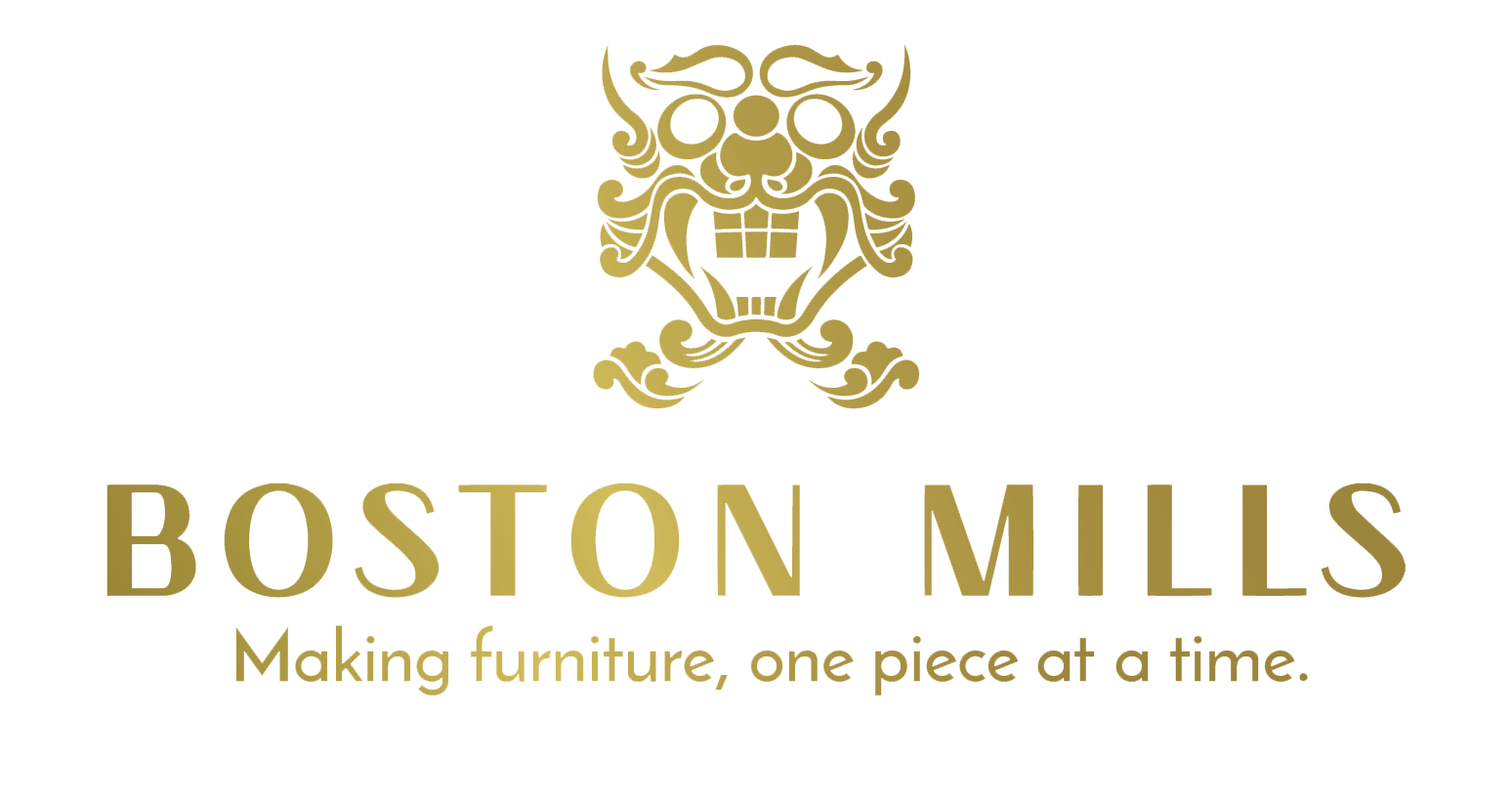SPECIALITIES
At Boston Mills, we collaborate with a highly skilled team of artisans who care deeply about the entire manufacturing process. We believe that this care and attention to detail imbues energy and integrity in the final piece that mass manufacturers could never replicate.
We love that we are keeping these traditional hand-crafting skills alive in an age of mass production and uniformity. But most of all, we’re proud of the quality of artistry and beauty of finish that we can achieve. The hours of patient work give an exclusive patina, making every item of Boston Mills furniture one of a kind and much appreciated by connoisseurs of fine furniture. Here are just a few of the many things in which we specialize:
HAND RUBBED FINISHING
Sanding, staining, and finishing are all done by hand on every piece of furniture. At the finishing stage, the surface is hand-rubbed numerous times, more than any other producer—accentuating the beauty of the natural wood grain for one-of-a-kind markings and hues.
The finish is an integral part of Boston Mills furniture, as it protects the piece and brings out the innate beauty of wood. Not everyone knows how to bring out the best from wood using finishes. A hand-rubbed finish can go a long way in protection and pleasing aesthetics.
At Boston Mills, our hand-rubbed finishing brings out beautiful smoothness through manual labor performed with utmost care and attention. However, it rarely means anything more specific than "real nice" in advertising language used by most furniture companies.
The surface's smoothness has everything to do with the sheen and feel of a finish. Boston Mills' hand-rubbed finishing makes a cured finish very smooth by rubbing with fine to extremely fine abrasives, often buffing with lambswool, cloth, or felt for the last step. A well-rubbed hand finish always gives a better impression than a finish left after hand or spray application. Hand-rubbed finishing can burn up plenty of elbow grease, and doing it very well requires both care and perseverance. This labor-intensive process is why most polishing, especially the commercial variety, is done with machines instead.
BOOKMATCHING
Bookmatching is the process of matching two or more pieces of wood surfaces so that the adjoining wood surfaces mirror each other perfectly – making it look like an open book. It adds significant visual interest to a project and has always been considered a hallmark of fine craftsmanship.
One of the keys to crafting visually pleasing bookmatched surfaces is our careful stock selection of rosewood. We handpick rosewood with rich color variations, a knot, or a vibrant display of grains so that when mirrored, a majestic pattern forms - much as the wings of a butterfly.
Next, we cut a solid block of wood into slabs – kind of like cutting up a loaf of bread into slices. Once cut, we number the slabs systematically. The first slab is polished in a block on one side while we polish it next to it on the other side. When we layout the slabs this way in an end-to-end style, the entire pattern continues from one slab to the next with no break between each other. And this is how we get that beautiful mirror image effect.
All bookmatched furniture pieces are priced at a premium because the manufacturing process is highly labor-intensive, time-consuming, and even wasteful. We selectively apply bookmatching to only a relatively small quantity of furniture to completely transform it - such as a tabletop or console front panel.
UNI-NEXUS: THE ARTISTRY OF SINGLE JOINT TABLETOPS
At Boston Mills, one of our areas of expertise is the creation of single joint tabletops, which we refer to as Uni-Nexus. The word "nexus" suggests a connection or link, conveying a sense of unity and completeness in the tabletop.
We specialize in creating large dining tables and desks made from solid rosewood, and the tops of these pieces of furniture feature a single joint that runs the length of the tabletop. The tabletop is the most visible part of a table, and we take great care in selecting the most admirable wood planks available for the top. The grain pattern and color of the lumber are also primary considerations at this stage.
This technique, known as Uni-Nexus, is considered the mastery of our skilled artisans, who have been using it for centuries. Low-grade manufacturers rarely employ it due to the lack of skill or high cost associated with this technique. However, we believe that the investment is worth it to create furniture built to last and stand the test of time.
The Uni-Nexus technique adds a level of durability, stability, and a seamless look to the finished piece. It helps prevent warping or twisting over time and creates a sense of unity and completeness in the tabletop. Our Uni-Nexus tabletops are a testament to our commitment to creating high-quality, timeless pieces.

